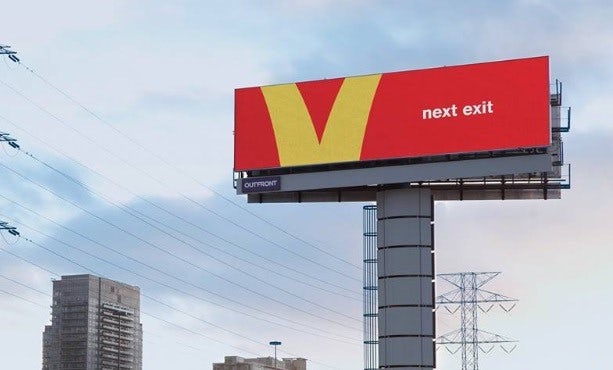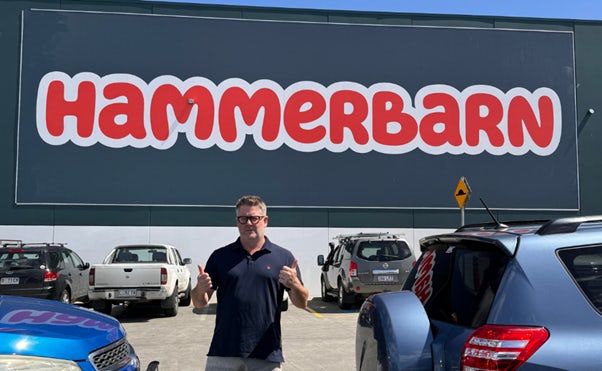Bluey and Bunnings’ tie-up demonstrates all the benefits of co-branding
The best bits of both brands rub off on each other, while playing with brand codes makes them more salient – but only because they’ve laid decades of groundwork.

I won the teaching prize at MIT six weeks after I started there. As the footnote to this column will confirm, I am no stranger to the odd gong for my writing too. But the greatest accolade I ever received came from a six-year-old at my daughter’s birthday party. As she was literally being dragged kicking and screaming into her car, she told her increasingly irate mum that she “wanted to stay at the party” because of the “funny man who is like Bluey’s Dad”.
It took a few seconds for the comment to land and then I lit up like a summer’s day. Earlier generations might have taken their paternal bearings from Mr Bennet or Atticus Finch, but in these early years of the 21st century, one father figure towers over all others like a giant blue colossus. Bluey’s dad, Bandit Heeler, is everything we human fathers aspire to be. He is patient, flawed, energetic and loved.
It’s a measure of the cultural capital that Bluey has built up in the six years since it began that its characters already compete with those from iconic fiction. Created by Joe Brumm and set in his native Queensland, the animated series is loosely based on Brumm’s own experience raising two daughters. Depending on your demographic, Bluey is either a central part of your existence or something you have never heard of. But its Moana-like ability to defy wear-out, combined with global distribution and an astonishing capacity to entertain adults alongside their kids, makes it a sensation for the ages.
A smart choice of partnership
Everyone has their favourite Bluey episode. ‘Cricket’ is up there. So is ‘Sleepytime’. But maybe the best of the lot is ‘Hammerbarn’, in which Bluey and her kid sister Bingo head off to a massive DIY superstore and learn a series of salutary lessons about conspicuous consumption, pizza flipping and gnomes.
For Bluey’s global audience, the episode is a playful critique of capitalism. But Aussie audiences enjoy an extra dimension because Hammerbarn is clearly a colourful take on Bunnings, the county’s uber-popular DIY chain. Unlike Bluey, it’s hard to explain the impact of Bunnings to non-Aussies. Mash up the inventory of Home Depot with the cultural appeal of M&S and add a sprinkle of Aldi’s distinctive strangeness, then paint it in an iconic green, red and white livery, and you’ll get close. Bunnings is the place where all Australians go to buy all the things they need for their homes.
There are no risks or downsides to such partnerships and a plethora of potential benefits.
So the news this week that several Bunnings stores have been rebranded Hammerbarn was, for those who love Bluey and know Bunnings, the guffaw of the year. Six of the company’s more than 500 locations will feature the Hammerbarn name and cartoon logo. And throughout February these ‘Hammerbarn’ stores will sell special products and host various Bluey-themed events.
“Our team across Australia have had kids and parents referring to Bunnings as Hammerbarn ever since the episode aired,” explains Ryan Baker, Bunnings’ chief customer officer. “So making this a reality in our stores for customers is really special. We wanted the Hammerbarn experience to be accessible to as many Bluey fans and customers as we could, so it’s great to have a Hammerbarn transformation in each state – even down to the kids’ trolleys that have been rebranded.”
It’s a very smart example of both co-branding and code play.
Co-branding occurs when two brands come together to present a (usually) limited-edition consumer offer. There is a shit-ton of data behind the power of co-branding that, in a nutshell, suggests there are no risks or downsides to such partnerships and a plethora of potential benefits. Co-branding drives editorial coverage. It allows established brands a new breath of fresh branding air and often products to sell. And the partner brand can often rub off some of its brand associations onto you while introducing an army of potential new customers to your wares. It’s all good.
Reinforcing brand assets
But it’s the code play part of the Hammerbarn experience that is especially strong. Codes, or distinctive brand assets as the Ehrenberg-Bass Institute refers to them, are a key component for brand building. But the Institute misses a trick in only discussing how these codes can be selected and then applied to drive distinctiveness. That’s all true and super important. But, after three or four decades of establishing the brand codes, the most distinctive trick of all is to fuck around with them in a way that makes consumers work to re-establish them. Let me explain.
Remember the great Coke ad the company occasionally runs, where you have to imagine the sound of the brand? You know the one. The ad shows a can being opened or a bottle being popped, and the copy challenges you not to hear the sound. Well, of course, the harder you try not to hear the sound of Coke, the louder it gets. And the imagined sound is so much more distinctive and memorable than any actual experience of hearing the sound could ever be.
After three or four decades of establishing the brand codes, the most distinctive trick of all is to fuck around with them.
The same goes for codes and their fucking-around-with. I remember one of the Bulgari team explaining to me that, if it wrapped all its boutiques at Christmas with the brand’s ‘Serpenti’ code, it communicated Bulgari far more clearly and loudly than seven giant letters spelling out the brand’s name. His explanation was that, when a consumer is driving down Fifth Avenue and they see the serpent, they think, rather than read, Bulgari. And the cognitive effort to fill in the semantic gaps results in better and richer brand salience. To make a brand come to mind, sometimes the mind needs to work a bit first.
This runs against a lot of the traditional Ehrenberg-Bass dogma, which stipulates you apply, apply, apply your codes at every turn to make it easy to think of the brand. I don’t disagree. Well, I don’t disagree for the first 40 years. But at some point, you earn so much salience that you can play with it.
When McDonald’s abstracts its Golden Arches to signal where to turn off the freeway for a burger, it is doing more than offering clever directions.
 The lack of name, the lack of logo, the lack of product force the driver to mentally complete the puzzle. When they do, the subsequent answer is far more apparent and salient than just a big picture of McDonald’s with a burger beneath it.
The lack of name, the lack of logo, the lack of product force the driver to mentally complete the puzzle. When they do, the subsequent answer is far more apparent and salient than just a big picture of McDonald’s with a burger beneath it.
Similarly, when Carlsberg turned its logo red to celebrate Liverpool’s Champions League success, the immediate, indelible response of the consumers that saw the limited-edition product was ‘green’.
 When Tiffany painted some of its boutiques yellow to promote a new diamond collection, it reinforced Tiffany Blue for both the media and target clients more than an ocean of Pantone 1837C could ever achieve. Mastercard took its name off its logo because the two interconnected circles cue the consumer to think ‘Mastercard’ more than being shown the actual word itself.
When Tiffany painted some of its boutiques yellow to promote a new diamond collection, it reinforced Tiffany Blue for both the media and target clients more than an ocean of Pantone 1837C could ever achieve. Mastercard took its name off its logo because the two interconnected circles cue the consumer to think ‘Mastercard’ more than being shown the actual word itself.
If your codes are incredibly redolent, you can make them the puzzle that the consumer must solve and, in doing so, remember.
Turning Carlsberg Liverpool-red is a branding masterstroke
Reaping the rewards of consistency
And the same goes for Bunnings. For decades the giant green, white and red sheds of its warehouses have been a staple outside almost every Australian town. By keeping the same colours but changing the name to Hammerbarn, and the logo to the Bluey version, Bunnings enjoys a host of branding advantages.
First, there are all the co-branding delights that will result. The Venn diagram of Bluey watchers and Bunnings customers has a big fat crossover. And, for these co-consumers, all the love, affection and cultural centricity they associate with Bluey now washes over onto Bunnings. Add in the press coverage. The increase in traffic as parents and kids head to Bunnings – I mean Hammerbarn – at the weekend. And you have a perfect co-branding play.

But, at the brand code level, there is also the ultimate win of covering over the 40ft high Bunnings logo with something else and forcing consumers into a double take, which, paradoxically, can only help Bunnings reinforce its Bunningsness all the more. The greatest trick the devil ever pulled was making you think he did not exist. And one of the most effective ways to drive salience is to reverse or erase or abstract your brand codes, thus forcing your consumers to do the unravelling and completion for themselves.
Again, let me repeat the all-important caveat: you need 40 fascist years of consistency first. But, once you have that signature, that salience, that centricity, that familiarity, you are probably also a little dusty. And that is the exact right time to use your familiarity to fix your over-familiarity by fucking around with your brand codes. Ignore the monochrome manual that says thou shalt always make everything super-obvious and didactic. Sure, do that. But occasionally don’t. Be playful. Be Bunnings. Be a bit different for a month. And make the consumer do the……
Mark Ritson is five-times winner of the PPA Columnist of the Year award, currently the British Society of Magazine Editors Business Columnist of the Year and the “funny man who is like Bluey’s Dad”, according to Amelia. Aside from children’s birthday parties, he also runs the wildly successful Mini MBA in Marketing.







